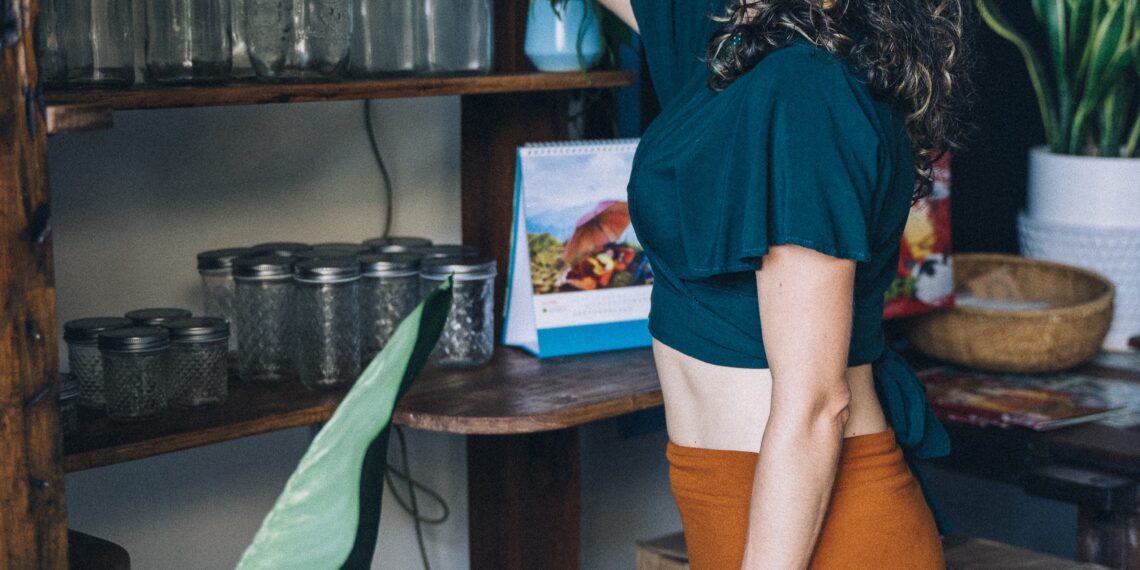You want to live sustainably and save money, but you’re stuck in a city apartment. Urban homesteading is the solution, turning tiny spaces into eco-friendly homes. Our tips will show you how to start growing food and making your own supplies without breaking the bank.
Ready to transform your space?.
Key Takeaways
- Urban homesteading in an apartment involves growing food, making homemade products, and reducing reliance on outside sources for daily needs.
- Apartment dwellers can save money by window gardening, making DIY cleaning supplies, participating in community-supported agriculture programs, and visiting local farms and markets.
- Sustainable living practices such as using energy – efficient appliances, reducing water waste, and recycling are achievable in an apartment setting.
What is Urban Homesteading?
Urban homesteading is the practice of self-sufficiency and sustainable living in an urban environment. It involves growing your own food, making homemade products, and reducing reliance on outside sources for daily needs.
Definition
Urban Homesteading is like being a farmer in the city. You use your apartment space to grow food, make your own stuff, and live in a way that’s good for the earth. It means you try to need less from stores because you can make or grow what you need at home.
The big ideas behind Urban Homesteading are using space wisely, not wasting things, and taking care of nature. People who do this try to use less water and power. They also turn kitchen scraps into compost to help their plants grow better.
Principles
Urban homesteading principles focus on sustainable and self-sufficient living in a city setting. They include:
- Using small spaces efficiently for gardening and farming
- Minimizing waste through recycling and upcycling
- Conserving water and energy to reduce environmental impact
- Prioritizing local and organic food sources
- Embracing DIY practices for household supplies and food production.
Why Apartment Dwellers Can Benefit from Urban Homesteading
Apartment dwellers can benefit from urban homesteading through cost-saving opportunities, sustainable living practices, and improved access to fresh food.
Cost-saving opportunities
Apartment dwellers can save money by growing their food, such as vegetables and herbs, in small urban spaces like windowsills or balconies. DIY projects for making cleaning supplies from simple ingredients found at home can also help lower expenses.
Participating in community-supported agriculture programs and buying directly from local farms and markets present affordable options for obtaining fresh produce.
By embracing urban homesteading practices, families on a budget can enjoy the economic benefits of sustainable living while contributing to a healthier environment in their community.
Sustainable living
Sustainable living means making choices that help the environment and use resources wisely. In an apartment, it’s possible to live sustainably by using energy-efficient appliances, reducing water waste, and recycling.
Families and low-income individuals can also grow their own fruits and vegetables at home or in community gardens to reduce food costs. Choosing eco-friendly cleaning products and buying local produce are other ways to support sustainable living while saving money.
Encouraging self-sufficiency through small space gardening, DIY homesteading, and urban agriculture can lead to a more affordable urban lifestyle for families on a budget. By making conscious choices about how we live in our apartments, we can contribute to a healthier environment while also benefiting our wallets.
Improve food access
To improve food access, urban homesteading offers families and low-income individuals the opportunity to grow their own fruits, vegetables, and herbs in small living spaces. Window gardening and balcony gardens are budget-friendly options that provide easy access to fresh produce.
Additionally, participating in community-supported agriculture programs or visiting local farms and markets can help families acquire affordable, locally grown food. By engaging in urban homesteading practices like these, apartment dwellers can take a proactive approach toward securing a more sustainable and self-sufficient food supply while embracing an eco-friendly urban lifestyle.
Budget-Friendly Urban Homesteading Ideas
– Window gardening allows apartment dwellers to grow herbs and small vegetables indoors, making the most of limited space.
Window gardening
Window gardening is an easy and affordable way to grow herbs, vegetables, and even fruits in your apartment. Here are some budget-friendly urban homesteading ideas for families and low-income individuals:
- Choose the right plants: Pick herbs like basil, mint, or parsley, as well as compact vegetables like cherry tomatoes and peppers that thrive in limited space.
- Utilize hanging planters: Hang planters on your windows to maximize vertical space, allowing you to grow more plants without taking up valuable room inside your apartment.
- Optimize natural light: Ensure your window garden gets sufficient sunlight by positioning your plants near sunlit windows for at least 6 hours a day.
- Watering schedule: Develop a consistent watering schedule to keep your window garden flourishing and healthy. Use keywords “urban gardening”, “apartment farming”, “small space homesteading”.
- Soil maintenance: Regularly check the soil moisture levels and fertilize as necessary to ensure the best growing conditions for your window garden.
Balcony gardens
Small balcony? No problem! You can create a beautiful and productive garden right outside your apartment. Here are some budget-friendly ideas for families and those on a low income:
- Vertical gardening: Grow plants like strawberries, herbs, and small vegetables in vertical planters to maximize space.
- Container gardening: Utilize pots, hanging baskets, and railing planters to grow a variety of plants such as tomatoes, peppers, and lettuces.
- Companion planting: Combine compatible plants in the same containers to save space and naturally enhance growth.
- Upcycled planters: Use recycled materials like old buckets, crates, or mason jars as unique and thrifty containers for your balcony garden.
- Creative trellising: Train climbing plants like cucumbers or beans to grow upward using homemade trellises or repurposed items like ladders.
DIY cleaning supplies
Make your own cleaning supplies using simple, affordable ingredients that are safe for your family and the environment. Here are some DIY cleaning supplies ideas:
- All-purpose cleaner: Mix equal parts of water and white vinegar in a spray bottle for an effective all-purpose cleaner. Add a few drops of essential oil for a pleasant scent.
- Baking soda scrub: Sprinkle baking soda on surfaces to scrub away dirt and grime. It’s gentle yet effective for kitchen, bathroom, and household cleaning.
- Lemon-infused vinegar: Soak citrus peels in white vinegar for a few weeks to create a citrus-infused cleaner that cuts through grease and leaves a fresh scent.
- Homemade laundry detergent: Combine grated bar soap, washing soda, and borax for an inexpensive and eco-friendly laundry detergent.
- Natural air freshener: Simmer cinnamon sticks, cloves, and citrus peels in water on the stove to naturally freshen the air without harmful chemicals.
- DIY glass cleaner: Mix equal parts of water and rubbing alcohol with a small amount of cornstarch for streak-free windows and mirrors.
- Wood furniture polish: Combine olive oil and lemon juice to make a natural wood polish that cleans and shines wooden furniture.
- Toilet bowl cleaner: Sprinkle baking soda into the toilet bowl, then add vinegar and scrub with a toilet brush for a sparkling clean toilet without harsh chemicals.
- Fabric softener alternative: Add white vinegar or baking soda to your laundry as a natural fabric softener without synthetic fragrances or chemicals.
- Drain cleaner: Pour boiling water down the drain followed by baking soda, then vinegar to clear clogs without using harsh drain cleaners.
Community-supported agriculture programs
Community-supported agriculture programs, also known as CSAs, are a great way for families and those on a low income to access fresh, locally grown produce. By joining a CSA, you can support local farmers and receive a share of their harvest on a regular basis.
This allows you to enjoy seasonal fruits, vegetables, and sometimes other products at an affordable cost. Additionally, many CSAs offer payment plans or subsidized shares to make it more accessible for low-income individuals or families.
Supporting local farms through CSAs not only provides access to fresh and healthy food but also fosters community connections and promotes sustainable agriculture practices. Participating in these programs can help urban dwellers embrace self-sufficiency while contributing to the local economy and reducing their environmental impact.
Visiting local farms and markets
You can save money by buying fresh produce directly from local farms and markets. You might find lower-priced fruits and vegetables that are in season. Look out for community-supported agriculture programs or CSAs, where you can get a regular supply of farm-fresh products at reasonable prices.
Visiting these places also helps to support local farmers and encourages sustainable urban living while gaining access to affordable, healthy food options.
Conclusion
Urban homesteading is not just for those with acres of land – apartment dwellers can also benefit from budget-friendly urban homesteading ideas, improving their self-sufficiency and sustainability in the city.
So go ahead and give it a try!
It’s possible to homestead in an apartment
Homesteading in an apartment is doable and beneficial. You can grow vegetables and herbs in small spaces like windowsills or balconies, reducing grocery bills and ensuring fresh produce.
DIY cleaning supplies using simple ingredients like vinegar and baking soda support eco-friendly living while saving money. Participating in community-supported agriculture programs or visiting local farms and markets provides access to affordable, sustainable food options.
Embracing urban homesteading principles promotes self-sufficiency, cost-effectiveness, and a greener lifestyle within the city environment.
Benefits of urban homesteading
Urban homesteading in the city brings many benefits for families on a budget. By growing your own food in apartment gardens and utilizing DIY cleaning supplies, you can save money while embracing an eco-friendly lifestyle.
Urban homesteading also provides access to fresh, locally grown produce through community-supported agriculture programs and visits to local farms and markets, promoting sustainable city living.
These practices not only help families save money but also encourage self-sufficiency and sustainability in small spaces. With urban homesteading, low-income households can enjoy affordable urban living while reducing their ecological footprint and contributing to a healthier environment for all.
Encouragement to get started.
Start small with a window garden or some DIY cleaning supplies. These are low-cost ways to begin urban homesteading in your apartment. You can also check out community-supported agriculture programs and visit local farms and markets for budget-friendly, sustainable living ideas.
Don’t feel overwhelmed; even small steps towards self-sufficiency in the city can make a big impact on your family’s budget and the environment.
FAQs
1. What is budget-friendly urban homesteading?
Budget-friendly urban homesteading is about changing your apartment space to grow your own food, live more ecofriendly, and become self-sufficient without spending a lot of money.
2. Can I really do farming in my apartment?
Yes! Apartment farming or apartment gardening lets you grow plants and even some veggies right where you live, using small spaces wisely.
3. What are some low-cost ideas for starting an apartment garden?
You can start by using DIY containers for planting herbs and veggies, reusing water bottles as planters, or trying out vertical gardening to save space.
4. Is it possible to live ecofriendly in the city through urban homesteading?
Definitely! By growing your own food and reducing waste, you contribute to an ecofriendly urban lifestyle that helps our planet while living in the city.
5. How can I practice self-sufficiency in a small city apartment?
Practicing self-sufficiency in a small space means making the most of what you have—like balcony gardens for fresh produce or learning urban permaculture techniques to create a thriving system with limited resources.








